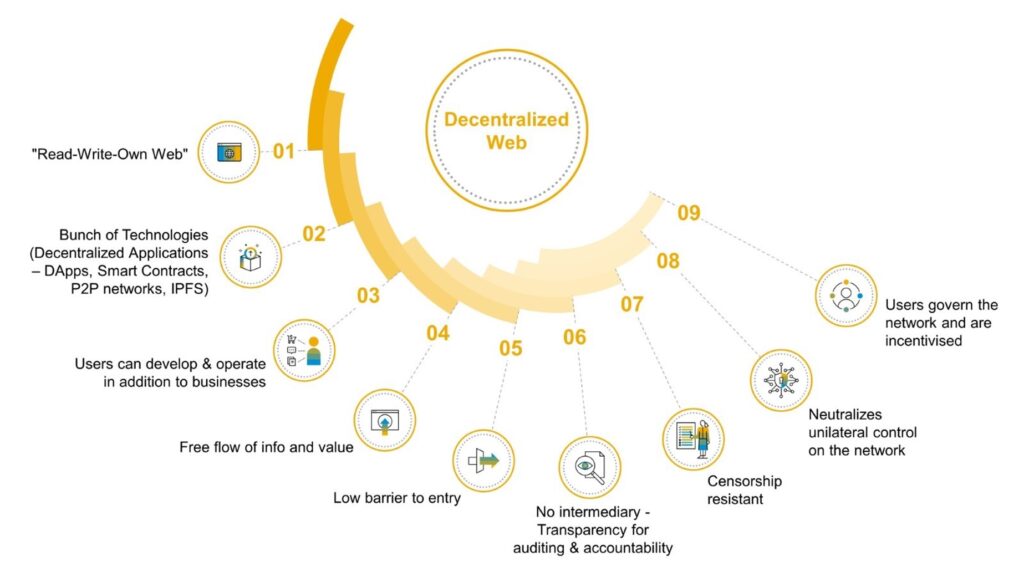When most people hear Web3, their minds still jump to cryptocurrency and NFTs. But in 2025, that’s like defining the internet by email alone. The Web3 space has rapidly evolved—quietly moving from hype to utility. And the most exciting part? We’re just beginning to unlock its full potential
What Is Web3—Really?
At its core, Web3 is the decentralized internet. It’s built on blockchain and distributed technologies that remove intermediaries, return data ownership to users, and enable more open, transparent digital ecosystems.
That means Web3 isn’t just about trading tokens or owning digital art. It’s about reimagining how we interact online—how we build trust, exchange value, and control our digital identity.
The 2025 Shift: From Speculation to Real-World Use
The last few years have been about experimentation. 2025 is about execution. Here’s where Web3 is making real, lasting impact:
🔐 1. Decentralized Identity (DID)
In a time when privacy breaches are the norm, decentralized identity solutions are a breath of fresh air. Web3 lets users own their digital identities—secured by cryptography and stored on the blockchain.
Think: logging into platforms without sharing your email, using self-owned credentials to access services, or proving your qualifications without handing over sensitive documents.
📊 2. Tokenized Real-World Assets (RWAs)
We’re seeing real estate, carbon credits, even company shares tokenized and traded on blockchain platforms. This isn’t a game—it’s a more liquid, transparent way to manage assets.
Tokenization allows fractional ownership, 24/7 trading, and easier cross-border transactions—something traditional markets struggle to offer.
💼 3. Web3 for Enterprise
Major companies are now building on decentralized infrastructure for more resilient, secure backends. Supply chain transparency, digital rights management, and decentralized data storage are no longer just concepts—they’re being implemented at scale.
Even brands in fashion and manufacturing are using blockchain to verify product authenticity and track sustainability metrics.
🛠️ 4. DAOs and the Future of Organizations
Decentralized Autonomous Organizations (DAOs) are reshaping how groups collaborate and govern. Instead of top-down hierarchies, DAOs run on smart contracts—enabling democratic decision-making and transparent financial management.
In 2025, DAOs are being used for everything from investment clubs to open-source software development to global nonprofits.
🌐 5. Rebuilding the Web Itself
Web3-native browsers, decentralized social networks, and peer-to-peer file sharing systems are creating a more resilient and censorship-resistant internet. Platforms like Farcaster and Lens are early examples of what online communities could look like without centralized gatekeepers.
This is a paradigm shift—not just in infrastructure, but in philosophy.

Why It Matters for Businesses Now
Whether you’re a startup, an enterprise, or somewhere in between—ignoring Web3 means missing out on the next era of digital transformation. The technology is maturing, the tools are more accessible, and the use cases are no longer experimental.
Forward-thinking companies are already exploring how to:
- Tokenize services or loyalty programs
- Empower users with self-sovereign identity
- Build on blockchain for auditability and trust
The question is no longer “Should we care about Web3?”—but “How can we start using it today?”
Conclusion
Web3 in 2025 isn’t about crypto bros and digital art auctions. It’s about rewriting the internet with transparency, ownership, and trust at its core.
At CODERSBRAIN, we’re watching this evolution closely—and helping businesses explore how decentralized technologies can create real-world impact.
Ready to explore the possibilities of Web3 for your business? Get in touch with us today.
Want to read more interesting blogs like this……Visit https://www.codersbrain.com/blog/
For Career Opportunities visit : https://www.codersbrain.com/careers/.
